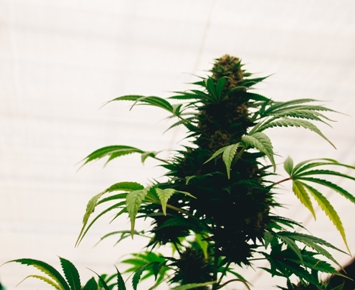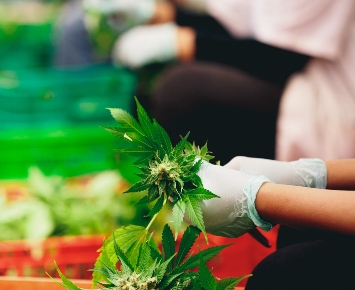San Diego Jewish Journal
San Diego Jewish Journal: "Marijuana in my Medicine Cabinet"


Medical marijuana, also known as medical cannabis, is saving people’s lives. Serious, crippling pain is becoming a tolerable dull ache. Cancer patients are no longer suffering from chemotherapy side-effects or fading away due to lack of appetite. People with post-traumatic stress disorder (PTSD) are sleeping peacefully and becoming whole again. And Israel is on board to help this movement grow.
Tel Aviv resident Sharon Goldfarb (50) suffers from rheumatoid arthritis. Once it started, the condition deteriorated rapidly. In July 2007, her hands started hurting and by late August, she could barely open them.
“I remember before Rosh Hashanah, standing in the supermarket with tears in my eyes, not able to take a carton of milk off the shelf, and having to ask a stranger to put the milk in my cart,” Goldfarb says.
Once diagnosed, she was given a host of medications to solve a variety of symptoms (fatigue, morning stiffness, difficulty sleeping, swelling, etc.).
According to Goldfarb, Methotrexate is the first treatment given for rheumatoid arthritis. “It’s a disease-modified drug and it inhibits your immune system. Methotrexate is toxic and you have to get monthly blood tests. It makes you feel really horrible at certain dosages and I was on the highest dosage there was.”
Alternative treatment options
Goldfarb learned to managed the symptoms and live with the pain, until a friend, Dr. Bareket Schiff-Keren, a well-known anesthesiologist and pain management expert in Israel, recommended she try marijuana.
“I laugh[ed] and roll[ed] my eyes. [I told her] I’ve already sewn my wild oats; I’m not going to start taking drugs,” Goldfarb says.
“I was on Methotrexate and other seriously strong drugs and I laughed at her every time she suggested medical cannabis!”
At the beginning of 2009, Goldfarb had a serious, debilitating flare-up and she finally agreed to go to her friend’s clinic.
Goldfarb went through a stringent permission process. After mountains of paperwork, she was approved for very limited usage.
“This license was for a specific amount every month. Back then, I went to a house in a town north of Tel Aviv, and there was a guy with long hair who listened to Pink Floyd while dispensing the drug. He was in a little one-room apartment, and there was a bowl of weed on the table.”
After buying the necessary accessories, Goldfarb managed to roll a joint with her arthritic hands and sat on her porch swing to give it a try.
“This is not street marijuana,” she remembers. “We’re talking about very potent cannabis. It takes two minutes to smoke half a joint, and it takes your brain about three minutes to get the effect. I was literally hallucinating. It was disastrous. I was feeling horrible and I realized that I had smoked too much. Everybody has different tolerance levels and mine is extremely low. Today, however, I know that I can smoke two hits of a joint, three at the most.”
Smoking a joint is not the only way to use medical cannabis. Goldfarb sometimes cooks and bakes with it, and it also comes in capsules or oil used under the tongue. It can also be vaporized using a special machine.
After getting used to the dosages, Goldfarb saw results right away.
“I can tell you that it really helps the pain. You can still feel it, but it’s a tolerable pain. Kind of like when you go to the dentist and get a Novocaine injection. … Since I’ve been using it, I sleep through the night, it lowers my stress levels and I’m not in so much pain,” she says.
Within a year, her dosage of Methotrexate had been reduced by nearly half and about four months ago, she stopped talking it completely. In 2010, she had stopped taking her other prescription, Plaquenil, as well.
A doctor’s point of view
Goldfarb’s friend, Dr. Schiff-Keren, is one of many Israeli pain management specialists who believe in medical cannabis. She has been prescribing it for her patients since 2003, even though, she says, there was no such thing as medical cannabis in Israel at that time.
“I just told the patient to get hashish from wherever [they could find it],” she says. Today, she treats nearly 2,500 people for all types of ailments.
“I am a pain specialist,” she continues. “Medical marijuana, in comparison to other pain medications, has far fewer side-effects and complications. There is no treatment that suits everyone, but relatively, this one is very effective. The marijuana doesn’t take the pain away, but it turns it into a tolerable experience.”
While there may be fewer side effects, Schiff-Keren is careful to note that not all patients benefit from its use. Some people panic when they lose control, and some have a tendency to develop tachycardia or any kind of tachyarrhythmia (irregular heart beat).
Additionally, the use of medical cannabis in teenagers and young adults is still viewed as risky by most medical practitioners. Young adulthood is an important time when the brain is still developing and hormones are all over the place. Some research has shown that the use of marijuana in teenagers can cause or exacerbate depression, psychosis or schizophrenia. This means a teenager with cancer who is going through chemotherapy and is in pain, suffering from nausea and lack of appetite presents a real dilemma for doctors. In the meantime, researchers are continuously working to find marijuana strains that don’t have a psychoactive effect.
Research and experience
Tikun Olam is one of the few marijuana organizations in the world with an enormous amount of research behind it.
Yitzhak (Tzachi) Cohen, an entrepreneur with a background in Kabbalah, started Tikun Olam in 2006 after he returned to Israel from the United States. When he lived in California, he became aware of the many medical uses of cannabis and decided that this was his mission in life, his way to help “repair or heal the world” (hence the name).
At the time, there were only about 25 people in Israel who had been given special licenses to use medical cannabis. Cohen applied to the Ministry of Health and he was given a license – the first in the State of Israel – to grow and supply medical-grade cannabis for patients.
Throughout the next four years, he developed various unique strains of the plant. By 2010, he was treating nearly 800 patients – for free.
“You could not take any money from patients at that time,” Ma’ayan Weisberg, Tikun Olam’s spokesperson, says. “Tzachi had 800 patients and it was becoming a financial problem. He thought the government would help him because he was helping people, but he received no funding whatsoever.”
Taking the next step
“In 2009, Tzachi approached Maccabi (one of Israel’s HMOs) with a pitch: he said he could save them 60 million shekels a year on health insurance for its members. He presented usage data on 3,000 of his past and current clients.
“The management at Maccabi realized what an amazing idea it was,” Weisberg says. “They saw that the patients Tzachi was treating had reduced their medication, were sleeping better, were feeling better, were eating better, and in general, their wellbeing had improved so they went less to the hospital, they went less to the doctor and they needed less medical treatment.”
Maccabi agreed to support him and they went to the Ministry of Health together. The government still doesn’t give any money towards the project, but companies supplying medical cannabis are now allowed to charge patients a set amount of 370 shekels (slightly more than $100). Today, there are eight companies participating, but Tikun Olam remains the most robust (they cultivate their own plants and offer the guidance of a professional nurse for patients).
Since its founding, Tikun Olam has provided quality care for its patients while developing professional standards for growing medical grade cannabis (creating new standards for the field). In the field of production, emphasis is put on special methods which focus on increasing production of the active ingredients – mainly tetrahydrocannabinol (THC) and cannabidiol (CBD) – so that medical grade plants may be grown.
Medical cannabis is produced in a careful and sterile way, beginning with the stages of planting, harvesting and processing; right up until it reaches the patient. The company’s facilities (growing and processing) are located in the northern part of Israel and are secured according to the highest growing standards.
To date, the company has developed 12 strains of medical cannabis for different uses and it serves 4,000 patients – nearly a third of the 14,000 patients receiving medical cannabis throughout Israel.
“Many people suffer badly from the side effects of the medications they take,” Weisberg says. “Many of them can’t be alone and they can’t work because the drugs are too strong. If you are a pain patient and you take morphine, you can’t function. Our patients are going back to work, back to parenting their children and are able to be part of society.
“We have reached the point where 85 percent of our patients are completely satisfied with their treatment. I don’t think you can say that about almost any other treatment there is today.”
While there is undeniable success, Weisberg, like Dr. Schiff-Keren, cautions that it’s not for everyone.
“People should not now go home and smoke cannabis,” she says, “but I think it should be provided to people who need it.”
Medical cannabis is now used in Israel to treat the symptoms of many diseases including Alzheimer’s, all types of arthritis, autism, cancer, chronic pain (considered a disease, not a symptom), epilepsy, fibromyalgia, glaucoma, ALS and multiple sclerosis, PTSD, Parkinson’s, Crohn’s Disease, and in some cases, HIV and AIDS.
Over the years, Tikun Olam has initiated and maintained cooperation with doctors, scientists, department heads, nursing facilities and other medical institutes in Israel and abroad.
The legal aspects
In Israel, the law defines marijuana as an illegal and dangerous drug, and there is still no legislation regulating its use for medicinal purposes. However, Israel’s Ministry of Health issues special licenses that allow thousands of patients to receive medical cannabis.
In the United States, California in 1996 became the first state to pass a law allowing the use of medical marijuana. Since then, 21 other states and the District of Columbia have followed suit, and at least four other states, including New York, appear to be on the brink. Colorado and Washington have legalized marijuana for recreational use as well.
At the U.S. federal level, however, marijuana remains classified as a Schedule I substance under the Controlled Substances Act. Schedule I substances are considered to have a high potential for dependency and no accepted medical use, making distribution of marijuana a federal offense.
According to the National Conference of State Legislatures’ website, in October of 2009, the Obama Administration sent a memo to federal prosecutors encouraging them not to prosecute people who distribute marijuana for medical purposes in accordance with state law. But this does not apply to research.
Back in Israel, Tikun Olam’s Weisberg believes the restrictive federal law is why quality research is not being conducted in universities and hospitals in California and the other states.
“Most of them get federal grants; they are funded by the federal government so they are not willing to do research with companies who produce medical cannabis,” she expalins. “Because it is illegal, they could lose their grants; so it is a Catch-22 situation. They have loads of applications. They could accumulate enormous amounts of data, but nobody has been doing it – unlike here where there has been collaboration for decades. The Israeli government has always allowed us to do research.”
Legalizing medical marijuana is a debate that continues worldwide, but the patients who have been granted licenses swear by it.
“There are always political issues around the topic of medicinal cannabis,” Goldfarb, the patient with rheumatoid arthritis, says, “But I would certainly advocate for it. … I can climb mountains again! In my opinion, it saved my life.”
Dr. Schiff-Keren agrees.
“For the sake of the people who need it, medical marijuana should be legal. … Prohibition creates a black market around a plant that can bring benefit and relief to human kind!”
http://sdjewishjournal.com/site/6767/marijuana-in-my-medicine-cabinet/









































